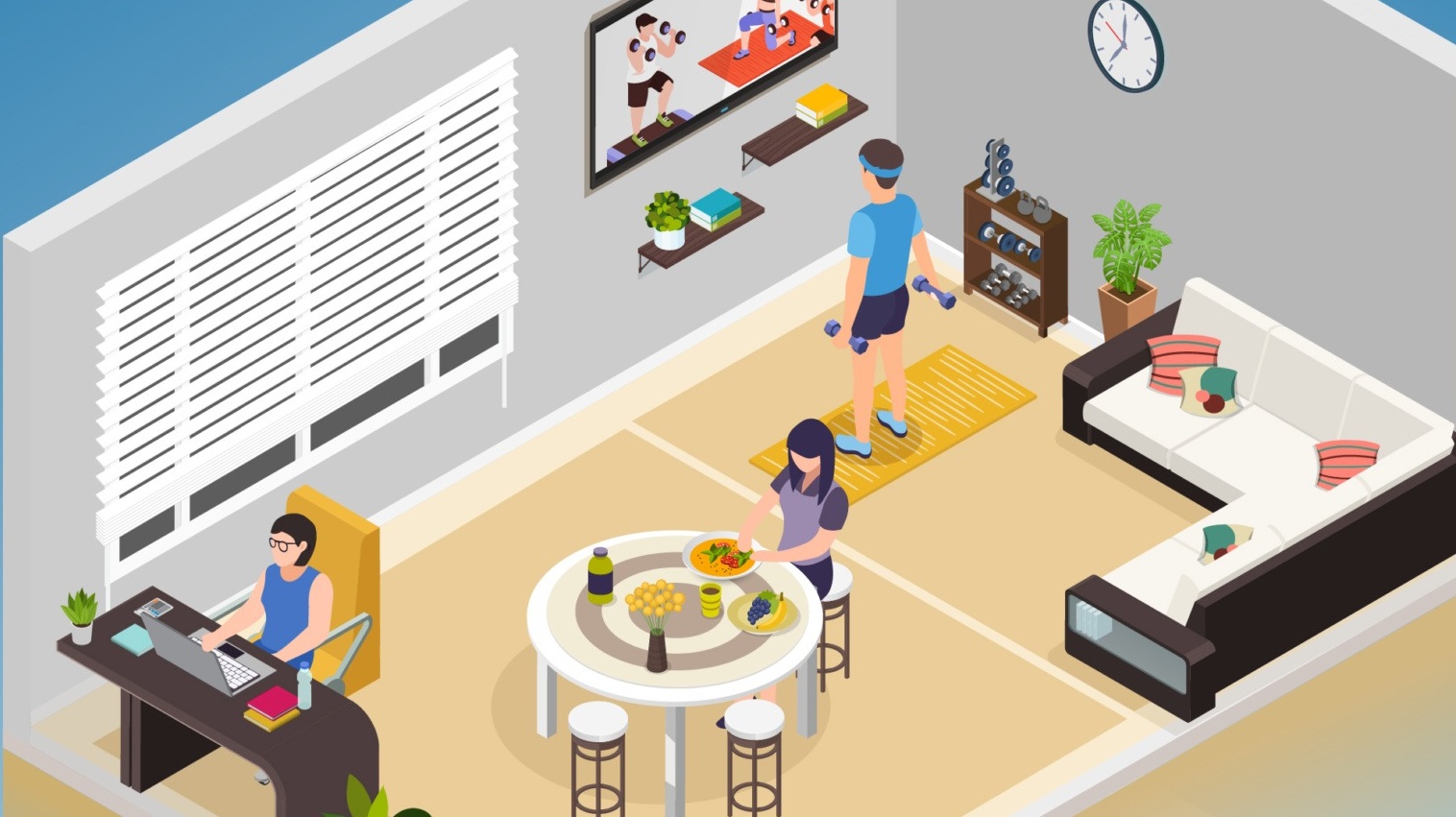We explore the different use cases of multi-purpose spaces and how home retailers can offer the design flexibility customers desperately need.
Retrofitting the home to ensure maximum flexibility is a trend that has recently grown in popularity, with 32% of staff expecting to work from home going forward. But it’s not only the office that is being absorbed into the home environment. Accelerated by the COVID-19 pandemic, many rooms once used for a single purpose now have dual functionalities; the kitchen table doubles as a work space, the living room is part gym and the spare bedroom substitutes a learning environment for children.
To accommodate their need for greater flexibility for the spaces within their homes, consumers require clever multifunctional designs from home retailers that can help them visualize and customize these increasingly common yet complex home use cases:
The home office
The rise of the home office has been one of the biggest global trends of 2020 and 2021. More people are working from home than ever before – in fact, as of 2021, more than 4.3 million people in the US work remotely, accounting for 3.2% of the entire workforce. But often the home office needs to function as more than a home office.
To facilitate a truly flexible space, it may need to work as a learning annex for any children or students in the household, or even for multiple people to work from or find solitude to read or enjoy hobbies. For those who don’t have a designated room, the home office may need to be a corner in the living room or kitchen, or a spot in the hallway – so being able to select dual-purpose furniture that’s an exact fit is key to helping consumers make the most out of this space.
The home gym
Traditionally, a home gym was seen as a luxury that few could afford. Either that or it might conjure images of an amateur set up in a dusty garage or basement. But as gyms and classes closed worldwide throughout 2020 and 2021, fitness seekers around the world turned to creating a space within the home to exercise instead. The home gym has since taken on a whole new meaning, with a blend of at-home workouts, equipment and technology available to transform any-sized space into an area to exercise effectively.
Whether it’s converting the lounge or a corner in the spare bedroom, consumers want to visualize new layouts of multi-purpose rooms before committing and completing a purchase.

The learning annex
Over the last two years, nursery, school and college students turned to full-time online learning, putting even more pressure on the home to deliver multi-functional spaces. Aside from the home office, areas such as the children’s bedrooms or the dining area have been utilized to facilitate conducive at-home learning, and family computers are being used for classes and tutoring.
Incorporating so many new functions into the home long term, including office, gym and home learning space, is proving a big challenge for consumers who also want to retain a place to relax and entertain.
They are turning to home retailers for the support and tools required to confidently redesign their spaces to fit with these new home use cases.
Support multi-functionality with 3D planning
A 3D planning solution like HomeByMe for Home Retailers provides customers with the means to visualize and experiment with new room layouts via an intuitive, easy-to-use online platform. As a white-label solution that is fully cloud-based, retailers can provide their customers with the means to create their own new designs completely autonomously via the website, with the support of an expert in-store, or using a combination of the two.
Incorporating lifelike 3D, 360-degree representations of their entire product catalog, retailers provide customers with the means to virtually apply new furnishings to their rooms, view them in different spots, ensure they fit and complement each other, before creating extremely realistic HD renders of how exactly their home would look.
For complex projects like creating multi-purpose spaces, this gives customers the freedom to explore various possibilities and take risks with their designs without the inconvenience of having to return items that are a poor fit or do not suit the rest of the room.
Customers can find greater confidence in their designs, while for retailers this ensures maximum opportunity to convert sales, cross-sell, upsell, and more generally optimize their sales process.
Conclusion
A 3D design tool like the HomeByMe for Home Retailers 3D planning solution provides customers with the means to implement multi-purpose spaces and redesign their homes with ease to fit their changing needs. To view more features of the HomeByMe for Home Retailers 3D planning solution, click here.



